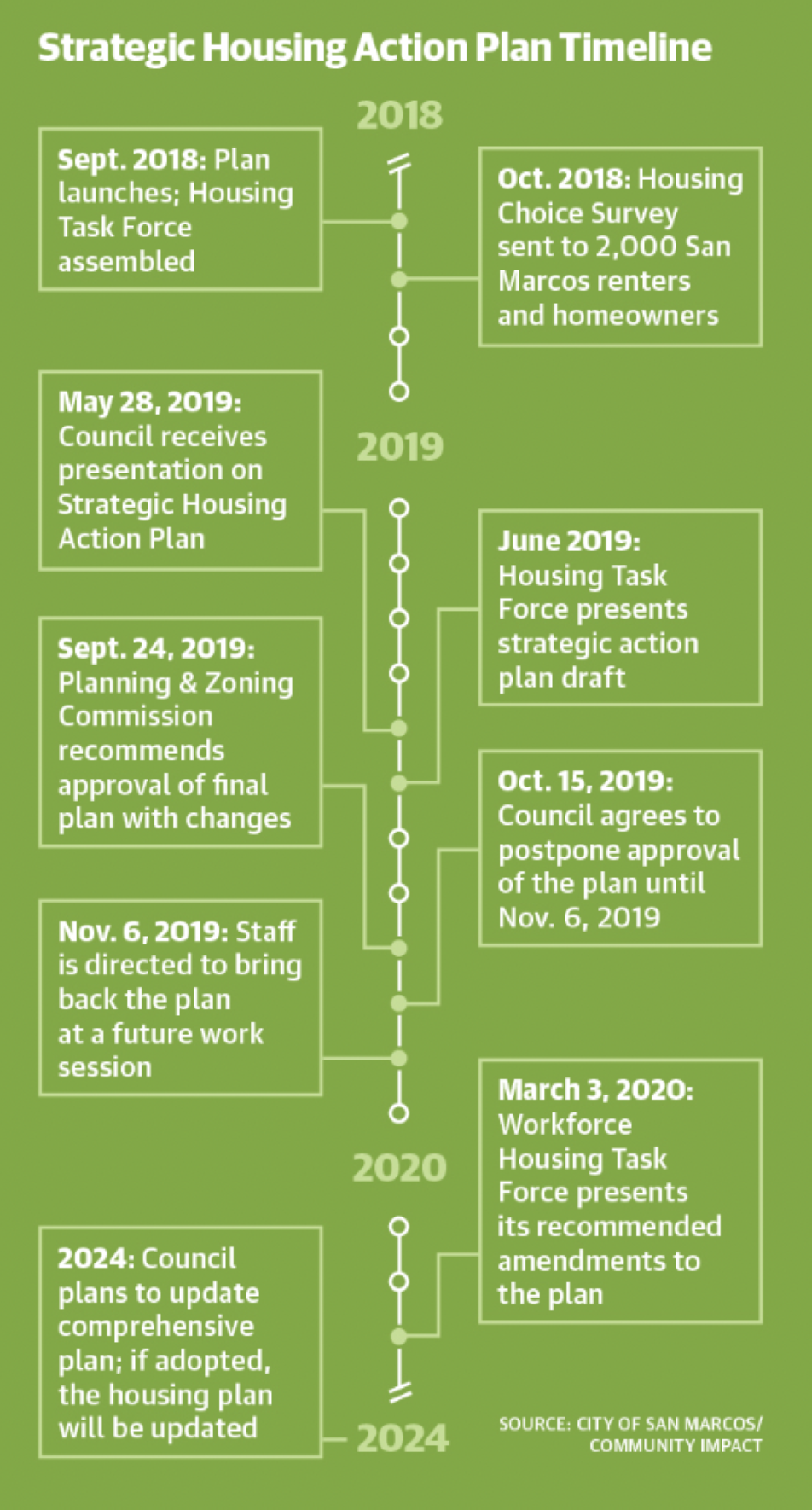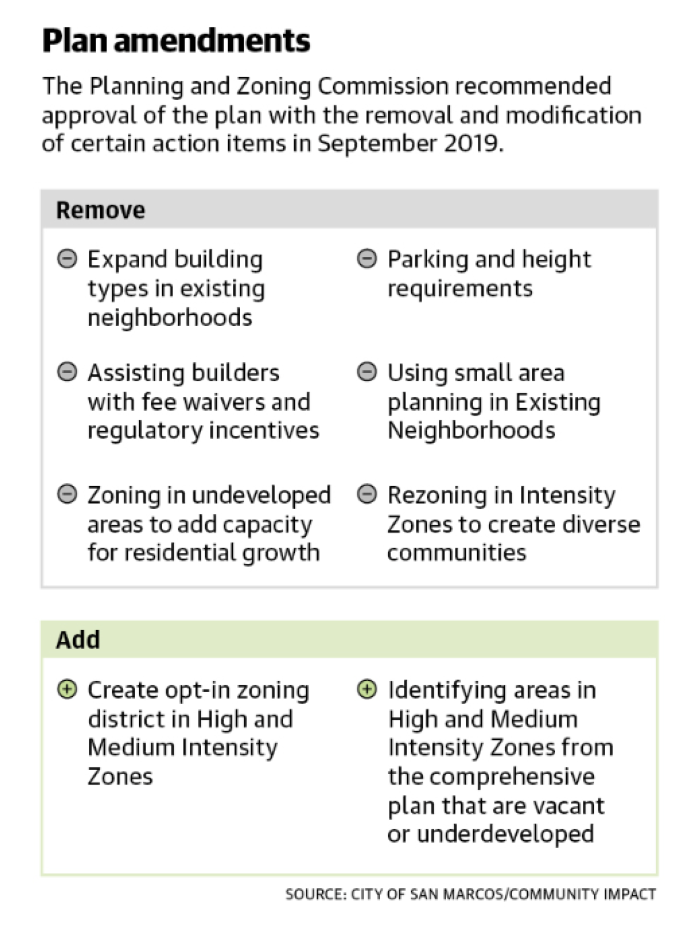Adoption of the housing initiative has been on hold because the city has been working on updating its comprehensive plan.
Andrea Villalobos, assistant director of planning and development services, said residents are still looking for housing they can afford—which is consistent with what the city heard in 2019.
“I think our community is wanting to maybe move into homeownership but maybe not feeling like that option is there at a price point for them,” she said.
Looking back
The initiative—also known as the Affordable Housing Plan or Workforce Housing Plan—was created by the Workforce Housing Task Force, a group of individuals tasked with developing a proposal to address housing needs in San Marcos.
The plan uses data from a 2019 housing study conducted by Root Policy Research to outline strategies with 28 actionable items.
The initiative aims to provide housing solutions for residents by maintaining the city’s existing housing stock and increasing homeownership rates, which is still a desired outcome among residents today, Villalobos said.
The plan cost the city $34,240 and will need updated data which will be conducted using existing staff resources.
Laura Dupont, former task force chair, said adopting the plan does not bind the city to anything, but would signal they take it seriously.
“That is what [the council] didn’t want,” Dupont said.

A closer look
Mayor Jane Hughson said the action items in the plan have been worked into other initiatives. Such as, the expansion of the city’s zoning districts was included in the Land Development Code 2018 update.
She noted that the Planning and Zoning Commission and council were concerned about the infill housing assistance objective. Infill housing is the development of vacant lots within a pre-existing development to create density. The commission and dais at that time also did not want to see regulatory incentives such as parking reduced.
Hughson said she isn’t sure if adopting the plan would have mitigated affordability issues caused by the COVID-19 pandemic.
“We’ve kind of been using parts of it all along, so I don’t know. I can’t say that it would’ve made a difference,” she said.

What the experts say
One economic element impacting housing affordability in San Marcos is high interest rates, said Haiyong Liu, Texas State University professor and chair of finance and economics.
When interest rates are low, buyers will take out loans to purchase homes, but when borrowing costs are higher, buyers are more reluctant to take out loans because homes are more expensive, which can make finding affordable housing challenging, Liu explained.
Although interest rates have spiked from 3% to 6%-7% within the past two years, there are signs inflation is in the process of being curbed, Liu said.
He said the Federal Reserve is considering making cuts to interest rates at least once this year, but there is no guarantee. Cuts to interest rates could help address affordability issues in the housing market.
Other signs of a stable housing market are increases in wages and employment, Liu said. The state increased its minimum wage—which was previously $7.25—to $10.50 for the first time in 15 years on June 1, and unemployment rates are at historically low levels, Liu said.
He said he is hopeful that home prices would return to an affordable level compared to 2021 or early 2022.
Why it matters
Hughson emphasized the importance of affordable housing because the city of San Marcos is a generally low- to moderate-income community.
At the height of COVID-19, housing prices in San Marcos, Buda and Kyle drastically increased from 2021 to 2022 and have steadily decreased since then, according to data from the Four Rivers Association of Realtors. Yet many San Marcos residents cannot afford the housing that is available, Hughson said.
Although poverty rates appear to be declining, San Marcos had a higher percentage of individuals below the poverty line in 2022 compared to Buda and Kyle, according to 1-Year American Community Survey data.
Dupont said now could be a good time for the city to adopt its Strategic Housing Action Plan.
“I think adopting the Strategic Housing Action Plan would be a step in the right direction if they would adopt it in its entirety the way it was presented,” Dupont said. If the city adopted the plan with the proposed changes then the document would be ‘pretty worthless,’ she said.
What's next?
There is no timeframe for when the city will have the updated data. The Strategic Housing Action Plan’s approval is contingent on the city’s comprehensive plan update approval.
It also is unclear when, or if, the council will adopt the changes made to the comprehensive plan.
“Once that plan is adopted, we’ll be kicking off this next task to get this data updated and get it before council,” Villalobos said.
Although the plan’s fate is undecided, the city council has approved multiple resolutions supporting the development of proposed, low-income multifamily housing tax credit projects, such as the Blanco Basin Multifamily Housing Project and Roers San Marcos Multifamily, through its participation in the Texas Department of Housing and Community Affairs Housing Tax Credit Program.





